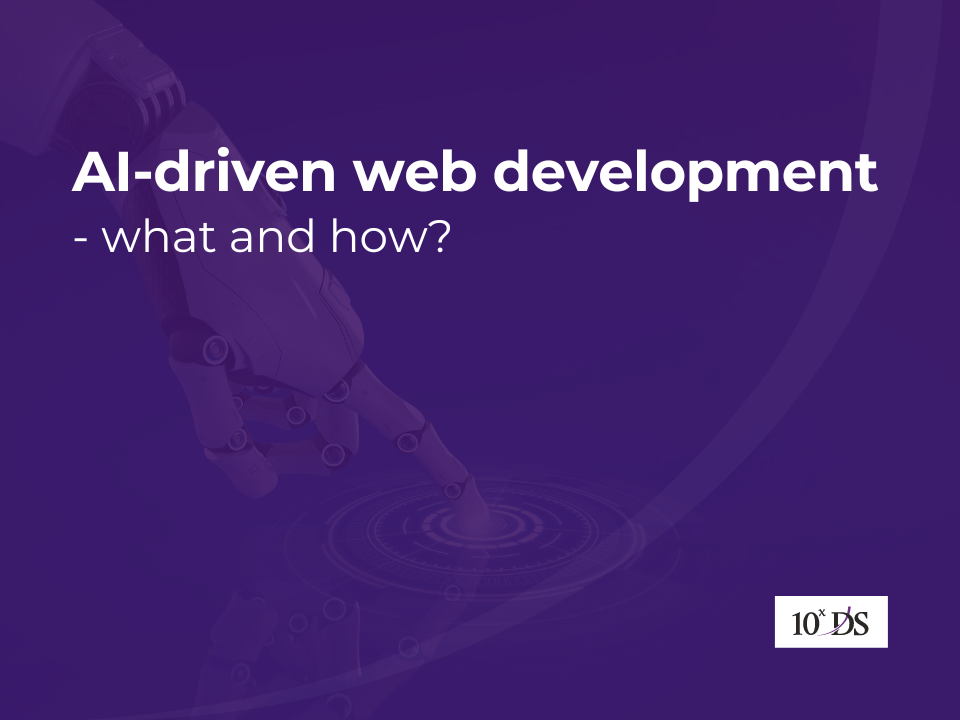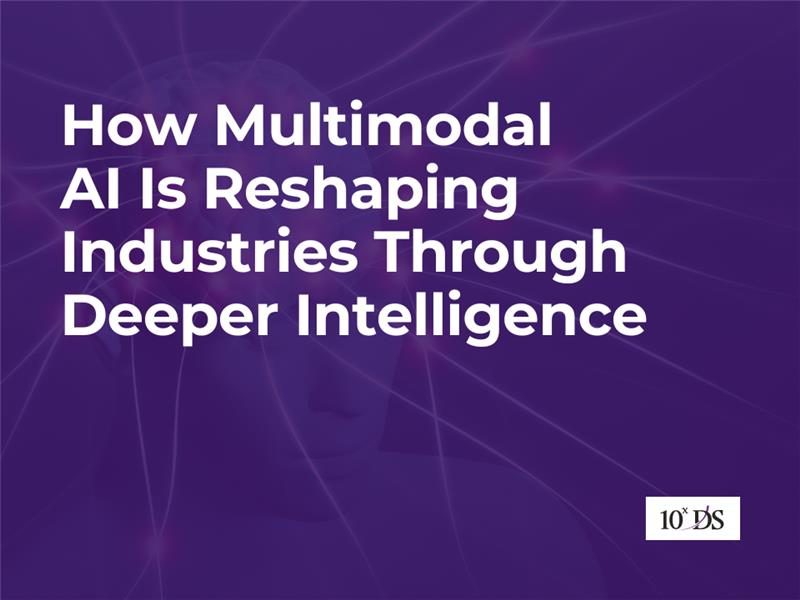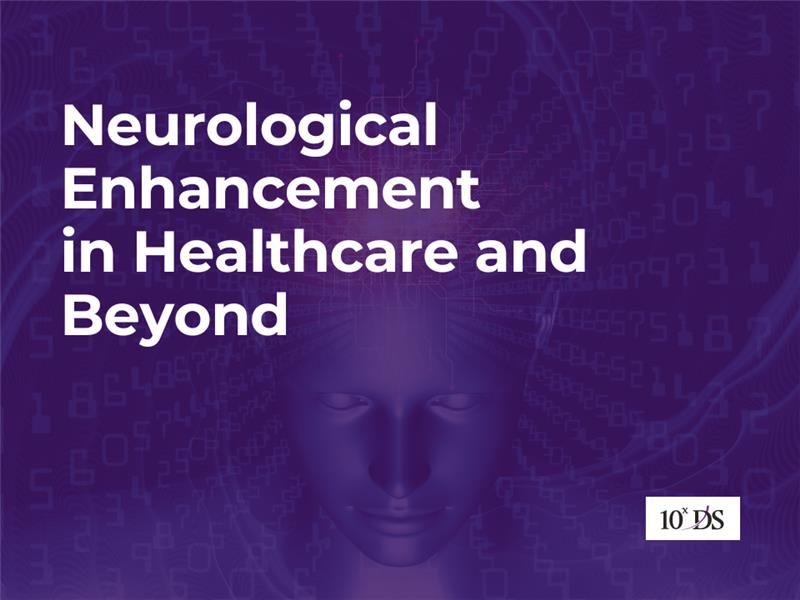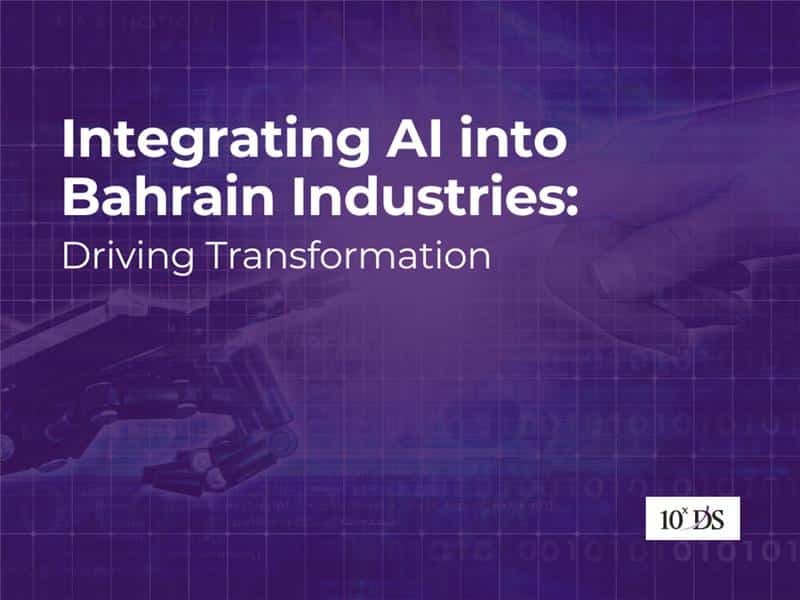
AI-driven Web Development – What and How?
61% of participants in a recent Forbes Insights report said they are using AI in their web development processes. So how is AI aiding in web development? AI-driven web development represents a groundbreaking convergence of artificial intelligence (AI) and web development, revolutionizing how websites are designed, developed, and maintained. This synergy is made possible through the utilization of sophisticated algorithms and data analysis techniques, enabling AI to enhance various facets of the web development process. Here’s a detailed elaboration on the different aspects:
Web Design
Web design encompasses the art and science of creating visually appealing and user-friendly websites. It involves the strategic arrangement of elements such as layout, colors, typography, and imagery to enhance user experience and achieve specific goals. AI tools in web design offer a plethora of features to streamline the design process. These include:
Drag-and-Drop Interfaces: AI-powered platforms often provide intuitive interfaces where designers can drag and drop elements to create layouts effortlessly.
Automated Design Generation: AI algorithms analyze user preferences, industry trends, and brand guidelines to automatically generate design suggestions or complete layouts.
Responsive Design Capabilities: AI helps ensure that designs are responsive and adapt seamlessly to different screen sizes and devices.
An innovative website builder, The Grid employs AI algorithms to streamline and personalize the website creation process. It adapts layouts, fonts, and colors based on user preferences, making web design more efficient. Other notable AI tools like Hostinger AI Website Maker and Canva exemplify these capabilities by offering customizable templates, intuitive interfaces, and AI-driven design suggestions.
Content Creation
Content creation involves the strategic development and production of engaging and valuable material for various mediums, such as websites, blogs, social media, and videos. It aims to inform, entertain, or inspire a target audience while aligning with brand objectives and values. AI-driven tools play a pivotal role in content creation by:
Generating Content: AI algorithms can generate content for websites based on predefined parameters, such as topic, tone, and target audience.
Optimizing for Search Engines: AI analyzes keywords, trends, and user behavior to optimize content for search engine visibility, improving organic traffic.
Personalization: AI can personalize content based on user behavior, preferences, and demographics, enhancing user engagement and retention.
AI content creation tools that are revolutionizing the way we produce written and visual content are ClickUp, Narrato, Lately, Jasper, Copy.ai, Synthesia etc.
Testing and Optimization
Testing and optimization entail the systematic evaluation and refinement of software, websites, or digital products to ensure functionality, performance, and user satisfaction. It involves employing various testing methodologies and data analysis techniques to identify and rectify issues, ultimately enhancing overall effectiveness and user experience.
Automating Test Case Generation: AI algorithms generate test cases based on code changes, ensuring comprehensive test coverage and faster testing cycles.
Identifying Bugs: AI-powered testing tools can detect bugs, performance issues, and compatibility issues across different devices and browsers.
Optimizing Performance: AI analyzes user interactions and system metrics to optimize performance, ensuring smooth user experiences.
A few applications in the market now are, TestGrid for mobile app testing, Katalon for test automation, performance testing, and API testing, Applitools for visual testing, Functionize for changes in the application and optimize test coverage.
Development and Deployment
Development and deployment involve the creation, enhancement, and implementation of software applications or digital solutions. Development encompasses coding, design, and testing phases, while deployment involves making the developed software available for use by end-users through various deployment strategies, ensuring reliability and scalability.
Code Generation: AI algorithms assist developers in generating code snippets, automating repetitive tasks, and identifying best practices. For example, GhostWriter auto-fills code in real-time as you type, seamlessly integrated with the Replit online code editor. It reduces boilerplate code and syntax errors, streamlining development. GitHub Copilot functions like a virtual pair programmer. It suggests whole lines or blocks of code as you type, making coding faster and more efficient.
Infrastructure Management: AI optimizes infrastructure provisioning, scaling resources dynamically, and ensuring high availability.
Deployment Acceleration: AI automates deployment pipelines, reducing deployment times and minimizing downtime.
Future of AI-driven web development
The future of AI-driven web development holds exciting possibilities, where artificial intelligence (AI) seamlessly intersects with human creativity to augment developers’ capabilities rather than replacing them. Hybrid approaches blending AI automation with human judgment will shape the future, enhancing efficiency and innovation. Expect advancements in automated code generation tools like GitHub Copilot to streamline coding processes. AI’s role in data analysis will deepen, enabling personalized user experiences by understanding behavior and preferences. Enhanced efficiency through task automation will empower developers to focus on creativity. Personalized user experiences, facilitated by AI algorithms, will dynamically adjust websites based on interactions, boosting engagement. Natural language interfaces will simplify navigation, while AI-driven accessibility innovations will improve inclusivity. AI’s contributions to security and fraud detection will strengthen website defenses. Content generation and personalization tools will optimize SEO and user engagement. Continuous learning AI models will adapt to evolving trends, ensuring websites remain cutting-edge.
In summary, AI-driven web development represents a paradigm shift in the industry, influencing every aspect of website development, from design to functionality, user experience, and optimization. By leveraging AI, developers can work more efficiently, deliver higher-quality software, and adapt to evolving user needs and market trends with agility. This fusion of AI and web development promises to redefine the digital landscape, empowering businesses to create compelling online experiences and stay competitive in a rapidly evolving digital ecosystem.
Talk to our experts to learn more.


